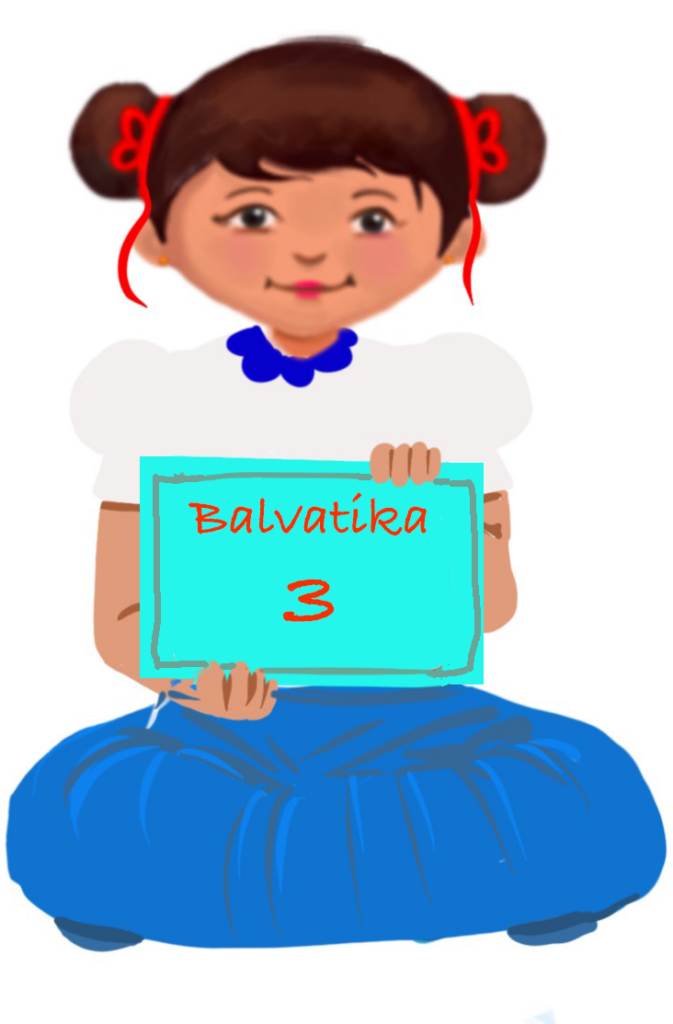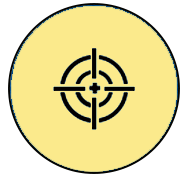
Comparing Objects
Week 4 – Long or Short
Learning Outcome
Compares two objects in terms of their lengths as long, short, or tall and uses vocabulary like longer than, shorter than, or taller than.
 Objective
Objective
Children will be able to use vocabulary like tall, long, and short in the context of different objects around them.
 Prerequisites
Prerequisites
Identify common objects in the surroundings.
Introduction: Story
The Camel and the Pig
On a hot summer day a camel was walking along the street, thinking aloud, “There’s nothing like being tall! Look how tall I am!”
A pig, hearing the camel’s bragging, said, “There’s nothing like being short! Look how short I am!”
The camel was very offended by these words. “Why, I can prove to you that it is far better to be tall. If I fail to prove this, I shall give up my hump.”
“And if I fail to prove that it is better to be short, I shall give up my curly tail,” said the pig.
“Agreed!” said the camel.
“Agreed!” said the pig.
They came to a garden, surrounded by a low wall with no gate. The camel stood outside the garden, reaching over the wall with his long neck to have a nice breakfast of the tender plants inside. He turned to the pig, who could not even see over the wall, to get a look at all the good things in the garden. “Now, would you rather be tall or short?” the camel said to the pig. The pig did not reply.
Next, they came to another garden, surrounded by a high wall with a small covered gate on one end. The pig went through the gate and feasted on the vegetables. When he came out, he laughed at the camel, who had to stay outside because he was too tall to enter the garden through the small gate.
“Now, would you rather be tall or short? The pig said to the camel. The camel did not reply.
Then they thought over the matter and came to the conclusion that they are good and happy as they are. The camel should keep his hump, and the pig should keep his curly tail.
Resources required:
Video of the story
Procedure:
- The teacher can play the video for the children to watch.
- The teacher can explain about the terms tall, long, and short. Height is measured with the term tall, length is measured with the term long, and both height and length are measured with the term short. Pause the video for required explanation.
- After the explanation, the teacher can ask the following questions to understand and assess the children’s comprehension skills.
- Why couldn’t the pig eat the food in the garden with the low wall with no gate?
- Why couldn’t the camel eat the food in the garden with the high wall with a small gate?
- Who has the hump?
- Who has the curly tail?
- Is it better to be tall or short?
- What is the difference between long and tall?
- Who has a long tail and who has a short tail?
 Notes to the teacher:
Notes to the teacher:
- The teacher can help the children to answer the questions.
- The teacher can then recapitulate the difference between tall, long, and short, showing the picture of the camel and pig.
Refer to ‘Receptive and Expressive language skills’ Adaptations and Strategies given in the Main page of ‘Comparing Objects’ if there are any neuro-diverse children in the class.
Video: The Camel and the Pig
ISL Video: The Camel and the Pig
Activity 1: Nature Walk
Objective:
To give the children an opportunity to explore the garden area/open space around their school to observe nature and communicate their observations to others in various ways.
Importance of the activity for children:
Helps in developing:
- Gross motor skills (walking, running)
- Fine motor skills (picking various objects, holding, hand-eye coordination)
- Cognitive skills (exploring, reasoning, creative thinking, mindfulness, attention to details)
- Sensory perception skills (observe and compare sizes, shapes and colours of natural objects, feeling the texture of leaves, smell of flowers etc. stimulates multiple senses)
- Social skills (work together, talking about what they see with other children, teachers and parents)
- Emotional skills (learn to share, appreciate nature, empathy for others, other living beings and inanimate matter)
- Early Mathematical skills (explore length and breadth dimensions of objects, classify and compare)
- Communication skills (stimulates conversations and questions as they explore and share their discoveries)
- Language skills (learn names of plants, animals and objects in environment)
Resources required:
- During the walk, one of the staff/teachers may carry a phone to take images or/and videos and sound recordings to show during the question-answer session with the children for classroom activity upon returning from the walk.
- A magnifying lens, if available.
- A bag for the teacher to collect materials like fallen dry leaves and twigs, pebbles, bird feathers, or anything interesting that is both long and short, which can be used in the classroom activity following the nature walk.
- After the walk: paper/drawing sheet, pencil, eraser, colour pencils/crayons for each child.
Setting for the activity:
The teacher may group the children in suitable pairs.
Type of activity: Individual activity
Preparation of activity:
After giving proper instructions to the children, the teacher will line up the children one behind the other.
Instructions:
- Children should walk with caution.
- Children should be careful while picking up the objects.
Role of the teacher: Facilitator, mentor, observer
Procedure:
Introduction and Instructions: Indoors
- The teacher may use TLM to introduce the activity to the children. The teacher may ask them to describe the pictures of leaves, sticks, twigs, flowers, and insects. After their response, the teacher may ask if they would like to go outside and observe these things.
- The teacher may reveal to the children that they will be going on a nature walk to observe the garden/area around the school. Then the teacher may give instructions regarding the nature walk, like:
- You should not pluck leaves and flowers on your way.
- Do not pick up any items from the ground; just look at them carefully.
- Hold the hand of your partner.
- Show your friend what you see in the garden.
During the Nature walk: Outdoors
- The teacher then leads the group to the area selected for the Nature walk.
- Children may be allowed to explore the area.
- The teacher may remind them to look at different things by pointing out to them interesting things and objects, especially their sizes – long and short.
- The teacher may encourage them to share with their partner what they see and compare their sizes.
- The teacher may use the magnifying lens to show the long and short leaves, grass, flowers and insects, twigs etc. to the students
[Note to the teacher: The teacher may constantly guide and encourage the children and ensure that the group is under protective supervision to freely explore nature in the garden area around the school and the children with special needs get adequate assistance to participate in the activity.]
Observation:
Sharing the observations and experiences: Indoors
- The children sit in the same pairs.
- The teacher may show the video and the photos taken during the walk to bring in excitement and motivation for the children.
The teacher may encourage the children to share their observations and experiences by eliciting answers to questions like the following:
- Did you see any tall trees? Name them.
- Compare the leaf that you collected in the garden with your partner’s leaf and find out which is shorter.
- Who has the long twig?
- Which tree has the long leaf?
The teacher can show the objects collected from the walk and ask questions like:
- What is the colour of this flower?
- Is it dead or alive?
- Is it soft or hard? Rough or smooth? Long or short? etc.
- Did you see anything else fallen on the ground?
[Note to the teacher: The teacher may analyze the responses of the children and give appropriate suggestions/comments to rectify misconceptions and instill values. Example, if the child says he/she doesn’t like soil, the teacher may explain that it’s because of soil that we get all the fruits and vegetables we eat, the houses are built using soil and the cotton we get for our dresses grows on soil and so on.
The teacher can ask questions based on their observation of what they saw using the magnifying lens such as,
- What does the leaf look like under the lens?
- What does the flower look like under the lens? Etc.
The teacher may encourage the children to
- Draw what they saw/liked/did not like during the nature walk.
- Speak about what they have drawn.
Conclusion:
Children are able to observe and describe finer details of common objects, sounds, animals, and birds in the immediate environment.
Suggested variation in rules:
There can be more than 2 children in each group going for the walk, say 5–7, with one teacher/staff supervising each group.
Follow-up activity:
- Children may be asked to act, make a sound, or make a facial expression to show how they felt after the nature walk.
- The drawings of the children may be displayed on the class bulletin board.
Precautions:
- The teacher may ensure the safety and well-being of all children during the walk.
- This activity should preferably be conducted with a small group of children to facilitate adequate supervision and assistance during the walk.
 Notes to the teacher:
Notes to the teacher:
- The weather should be fine for outdoor activity. Children may wear caps if required. The teacher may arrange for dry snacks for the children and water bottles.
- This activity can be arranged in different seasons for children to experience the joy of rain, the warmth of the sun in winter, the shade of trees in summer, and the cool breeze of autumn and make observations in various seasons and the difference between them.
Refer to ‘Attention and Focus’ Adaptations and Strategies given in the Main page of ‘Comparing Objects’ if there are any neuro-diverse children in the class.
Video: Nature Walk
ISL Video: Nature Walk
Activity 2: Who am I? Long or Short?
Objective:
To enable the children to name the long and short sides of the objects as mentioned in the flashcard.
Resources required:
- Fridge picture cards
- Table picture cards
- Cupboard picture cards
- Box picture cards
- Aquarium picture cards
- Book
Setting for the activity:
The teacher may make the children sit in order.
Type of activity: Group activity
Preparation of activity:
- The teacher will make groups of 2 children each.
- Each group will get 2 cards.
Importance of the activity for children:
Helps in developing:
- Gross motor skills (walking, running)
- Fine motor skills (picking various objects, holding, hand-eye coordination)
- Cognitive skills (exploring, reasoning, creative thinking, mindfulness, attention to details)
- Sensory perception skills (observe and compare sizes, shapes and colours of natural objects, feeling the texture of leaves, smell of flowers etc. stimulates multiple senses)
- Social skills (work together, talking about what they see with other children, teachers and parents)
- Emotional skills (learn to share, appreciate nature, empathy for others, other living beings and inanimate matter)
- Early Mathematical skills (explore length and breadth dimensions of objects, classify and compare)
- Communication skills (stimulates conversations and questions as they explore and share their discoveries)
- Language skills (learn names of plants, animals and objects in environment)
Role of the teacher: Facilitator, mentor, observer
Procedure:
Introduction and Instructions: Indoors
- This activity will be done in two rounds.
- In the first round, the teacher will give 2 cards to one group.
- Children will sit at a certain distance in each group.
- First, one child in the pair will pick up a card: For example, take a rectangle card and identify the name of the long side (I) of the rectangle and the short side of the rectangle, namely (J).
- The second child now will pick up another card and name the long and short sides of the object.
- In the second round, the cards will be exchanged and the game will be continued.
[Note to the teacher: The teacher may constantly guide and encourage the children.]
Observation:
Sharing the observations and experiences
The teacher may encourage the children to share their observations and experiences by eliciting answers to questions like the following:
- Did you enjoy the game?
- How did you feel when you played this game?
- Was it easy for you to identify the long and short sides?
Conclusion:
Children can identify and name the long and short sides of the object shown in the flash cards.
Suggested variation in rules:
In each round she can exchange the two group cards.
Refer to ‘Fine motor skills’ Adaptations and Strategies given in the Main page of ‘Comparing Objects’ if there are any neuro-diverse children in the class.
Video: Who am I? Long or Short?
ISL Video: Who am I? Long or Short?
Flashcards: Picture cards
Vocabulary cards: Long, short and tall
Poster: Long, Short and Tall
Assessment
The teacher can give the assessment worksheet at the end of the lesson.
Worksheet: Practice – Long or Short
Worksheet: Practice – Long or Short (Enlarged)
Worksheet: Assessment – Long or Short
Worksheet: Assessment – Long or Short (Enlarged)
Home Activity
Objective:
To reinforce the concept of ‘Long or Short’ by comparing objects through an online fun activity.
Fun Activity: Long or Short

Cross-Curricular Connection:
- In Language class:
- The teacher can introduce new words related to nature and new words related to long and short objects such as wire, scale, and trees to enhance their spoken language skills.
- Children learn the correct spellings of long and short objects and their correct pronunciation too.
- In Art class:
- The drawing session of the activity can be linked to the art and crafts class. The teacher may also involve the children in making a collage of the garden by providing images or cutouts of leaves, grass, trees, flowers, birds, clouds, sun, etc.
- In EVS class:
- Children can be encouraged to think of other elements of nature like earth, weather, seasons, etc.
- Ask them what happened when they saw the object under the lens. The teacher may explain to them that lenses are used to see an enlarged image of an object.
- Tell them about useful insects like bees and snails.
- Can ask the children to discuss the uses of long objects and short objects
- Value education:
- Explain about not hurting insects, taking care of plants and animals, not harming nature, etc.
Check list for teacher:
| Activity | Yes | No | Sometimes |
| Children can: | |||
| Comprehend and use the terms long and short in the context of different objects around them | |||
| Identify long and short objects found in nature | |||
| Relate the terms long and short in real life situations | |||
| Maintain balance while walking and endure the challenges | |||
| Explore and appreciate the natural surrounding | |||
| Focus on the activity | |||
| Complete the activity in the given time | |||
| Do the activity independently | |||
| Express verbally and through actions, expressions or gestures |
Teacher Resource Document
| Source and Attribution of images: All images used in the above Assets and Aids are originally created. |
| This digital material has been developed by the Sri Sathya Sai Vidya Vahini Inclusive Education Project, a unit of Sri Sathya Sai Central Trust, Prasanthi Nilayam, as a collaborative offering in the service of our nation. |